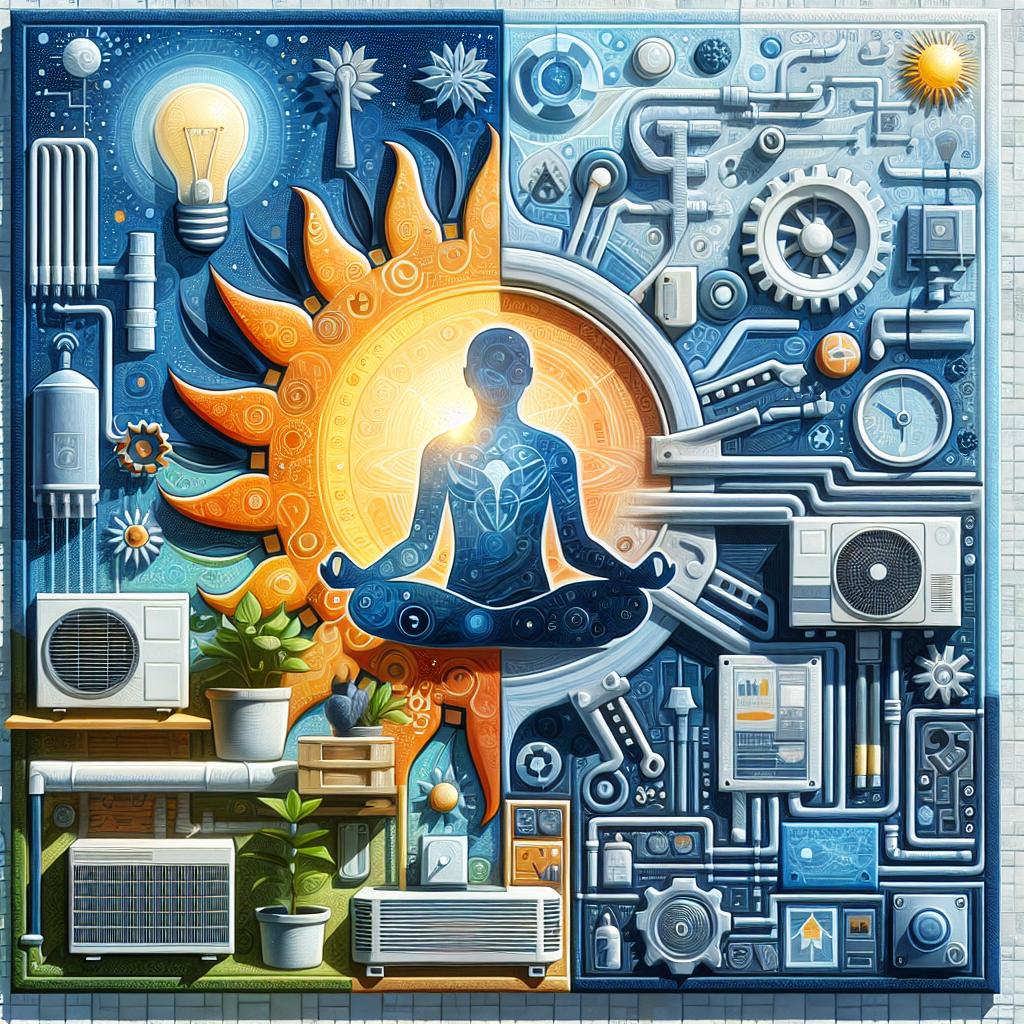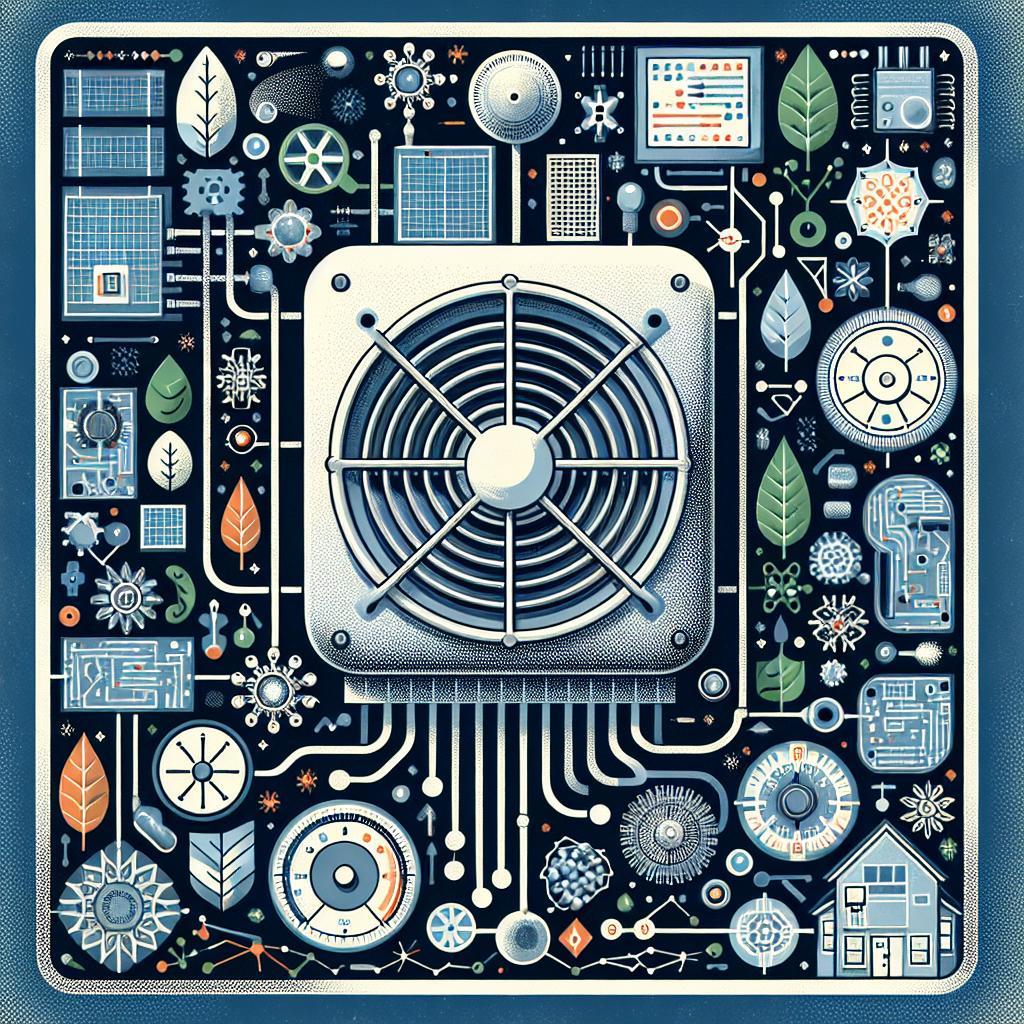Building a Comprehensive HVAC Training Board: Empowering Future Technicians
In the fast-evolving world of heating, ventilation, and air conditioning (HVAC), practical training is crucial for aspiring technicians. As the industry grapples with the dual challenges of advancing technology and growing demand for skilled professionals, the need for effective training tools becomes more pronounced. Enter the HVAC training board—a versatile and hands-on resource designed to bridge the gap between theory and practice. Whether you’re an educator looking to enhance your curriculum or a seasoned technician wanting to mentor the next generation, constructing a training board can serve as a powerful educational tool. In this article, we’ll guide you through the steps to build your own HVAC training board, empowering you to create an engaging learning experience that prepares students for real-world challenges in the HVAC field. Let’s dive into the essentials of crafting a training board that is not only functional but also a catalyst for knowledge and skill development.
Choosing the Right Materials for Your HVAC Training Board
When constructing your HVAC training board, the selection of materials is crucial for durability, usability, and educational effectiveness. Start with a solid base, such as high-quality plywood or MDF (Medium-Density Fiberboard), which offers a sturdy foundation while being easy to work with. Next, it’s essential to incorporate materials that can withstand the wear and tear of repeated usage. Consider utilizing acrylic panels for displaying wiring diagrams and system schematics, as they provide clarity and can be easily wiped clean. To enhance interactivity, integrate removable components made of plastic or metal, which can simulate real HVAC equipment connections and allow for hands-on experience in troubleshooting scenarios.
In addition to the primary structure, the choice of connectors and fittings can greatly influence the functionality of your training board. Opt for real-world components such as valves, pipes, and gauges, which offer tactile learning experiences. Coupling these with visual aids like labeled diagrams or instructional stickers will help learners quickly identify parts and their functions. For a comprehensive setup, consider organizing your materials into a layout table for easy reference:
| Material | Purpose | Benefits |
|---|---|---|
| Plywood/MDF | Base structure | Durable, easy to modify |
| Acrylic Panels | Display information | Clear visibility, easy maintenance |
| Real Components | Hands-on practice | Authentic learning experience |
| Visual Aids | Identify parts/functions | Facilitates better understanding |

Designing an Effective Layout to Maximize Learning
Creating an effective layout for your HVAC training board involves a harmonious blend of accessibility and engagement. To accomplish this, ensure that essential components are strategically positioned to facilitate easy access while maximizing visibility. Consider the following elements:
- Color Coding: Use different colors for various systems to help trainees quickly identify components and sections.
- Interactive Elements: Incorporate movable parts or digital screens to foster hands-on learning and interactivity.
- Clear Labeling: Ensure all parts are clearly labeled with concise, informative descriptions to enhance understanding.
Additionally, the layout should promote collaborative learning opportunities. Designating specific areas for group activities can encourage discussion and teamwork. A suggested configuration includes:
| Area | Purpose | Suggested Size |
|---|---|---|
| Component Display | Showcase critical HVAC components | 4×6 ft |
| Interactive Station | Hands-on system assembly | 5×5 ft |
| Group Discussion Zone | Facilitate collaborative learning | 3×4 ft |
By combining visual appeal with functionality, you can create a training environment that maximizes learning and retention for HVAC trainees.

Incorporating Real-World Scenarios for Practical Application
Integrating real-world scenarios into your HVAC training board design can significantly enhance the learning experience. By simulating actual problems that technicians might face in the field, learners can practice troubleshooting and problem-solving in a controlled environment. Consider the following elements when developing your training board:
- Common HVAC Issues: Incorporate typical faults like refrigerant leaks, faulty thermostats, or broken fans. This hands-on approach allows students to diagnose and repair these issues.
- Interactive Components: Design sections where learners can manipulate components, such as adjusting air flow or testing temperatures, reflecting real-time scenarios.
- Diagnostic Tools: Include equipment like pressure gauges and multimeters to familiarize students with the tools of the trade.
To better assess their skills, you can create a table for instructors to track student progress during practical exercises:
| Scenario | Skill Tested | Status |
|---|---|---|
| Refrigerant Leak | Leak Detection | ✔️ |
| Faulty Thermostat | Wiring Troubleshooting | ❌ |
| Broken Fan | Component Replacement | ✔️ |
By regularly updating these scenarios and encouraging collaborative problem-solving, you can create an engaging and interactive training experience that prepares students for real-world challenges in the HVAC industry.

Enhancing Engagement with Interactive Features and Technology
To create an engaging HVAC training board, leveraging interactive features can significantly enhance the learning experience. Consider incorporating interactive elements such as:
- Touchscreen Displays: Allow trainees to explore complex HVAC systems through touch-based interfaces.
- Virtual Reality (VR): Immerse users in simulated environments for hands-on practice with real-life scenarios.
- Augmented Reality (AR): Use AR applications to overlay digital information onto physical components, making learning more intuitive.
- Gamification: Implement quizzes and challenges to motivate and reward learning milestones, creating a competitive yet fun atmosphere.
In addition to interactive elements, utilizing modern technology can elevate the effectiveness of training sessions. Here are some technological tools that can support HVAC education:
- Video Tutorials: Use instructional videos to provide visual guidance on technical tasks.
- Online Forums: Create a platform for trainees to collaborate, share knowledge, and ask questions.
- Simulation Software: Employ specialized software that allows learners to simulate HVAC scenarios and practice troubleshooting.
- Mobile Applications: Develop apps that provide quick access to HVAC resources and calculators on-the-go.
Q&A
Q&A: How to Build an HVAC Training Board
Q: What is an HVAC training board and why is it important?
A: An HVAC training board is a hands-on, interactive display that illustrates various components of heating, ventilation, and air conditioning systems. It serves as an educational tool, allowing trainees to familiarize themselves with equipment, wiring, and system layouts in a controlled environment. It’s important because it bridges the gap between theory and practical application, enhancing learning efficiency for aspiring technicians.
Q: What materials do I need to create an HVAC training board?
A: To build your HVAC training board, you will need a sturdy base (like plywood), various HVAC components (e.g., fans, compressors, thermostats), electrical wiring, tools (screwdrivers, pliers, wire strippers), a power source, mounting hardware, and optional materials such as labels, diagrams, or paint for aesthetics.
Q: Can you walk me through the step-by-step process of building an HVAC training board?
A: Certainly! Here’s a simplified process:
- Choose a suitable size for your board, typically 4’x8’ works well.
- Securely attach your base material to a wall or frame.
- Layout the HVAC components as per your design—consider including a mini split system, ductwork, or even refrigeration elements.
- Use mounting hardware to firmly attach components to the board.
- Wire the components together according to standardized schematics.
- Label each part for easier identification during training sessions.
- Test the board to ensure all elements operate correctly before using it for training.
Q: What specific components should I include for an effective training board?
A: A well-rounded training board might include:
- A variety of thermostats (analog and digital)
- Compressors
- Air handling units
- Ductwork sections
- Valves, including zone control valves
- Refrigerant gauges
- Fans and evaporators
- Safety controls and wiring diagrams for practical learning
Q: How can I make the training board more user-friendly?
A: To enhance user-friendliness, consider using:
- Color-coded wires and labels to help identify components easily.
- Transparent covers for certain areas to expose internal functioning, improving understanding of operations.
- Diagrams or flowcharts nearby for reference during training.
- Interactive elements, such as switch/buttons to engage users actively.
Q: What are some maintenance tips once the HVAC training board is complete?
A: Regular maintenance is key to longevity:
- Periodically check all connections and components for wear or damage.
- Clean the board and components to prevent dust buildup that could impact functionality.
- Update any materials or techniques used on the board to reflect new technologies or methods in the HVAC industry.
- Conduct safety checks to ensure all electrical and mechanical parts are secure and operational.
Q: How can I utilize the training board for group training?
A: To facilitate group training, establish a rotational system where trainees can work in small teams on different components or systems. Incorporate quizzes to test each group’s knowledge after they complete hands-on tasks. Encourage discussions around troubleshooting techniques and real-world scenarios to promote collaborative learning.
Q: What are the potential challenges in building an HVAC training board?
A: Challenges may include sourcing all necessary components within budget, ensuring all wiring is up to code, and creating an organized layout that accurately represents real systems. Additionally, ensuring safety in electrical applications during training is crucial. Preparing for these challenges with careful planning and consultation can lead to a successful build.
Q: How can I ensure my HVAC training board stays relevant in a rapidly evolving industry?
A: Regularly update your training board with the latest HVAC technologies, techniques, and best practices. Attend trade shows, subscribe to industry journals, and network with other professionals to keep abreast of new developments. Engage with trainees for feedback on their education needs and adjust your training board accordingly.
The Conclusion
embarking on the journey of building your own HVAC training board is not just an investment in tools—it’s an investment in knowledge and skill. This hands-on approach empowers aspiring technicians to gain a deeper understanding of HVAC systems, enhances troubleshooting capabilities, and fosters confidence in real-world applications. By following the outlined steps and incorporating your unique insights, you can create a training board that serves not only as a valuable educational resource but also as a testament to your ingenuity. As you design and assemble each component, remember that every wire connected and every mechanism tested contributes to the future of efficient climate control. So, roll up your sleeves, and dive into the world of HVAC education—your journey toward mastery begins here!

